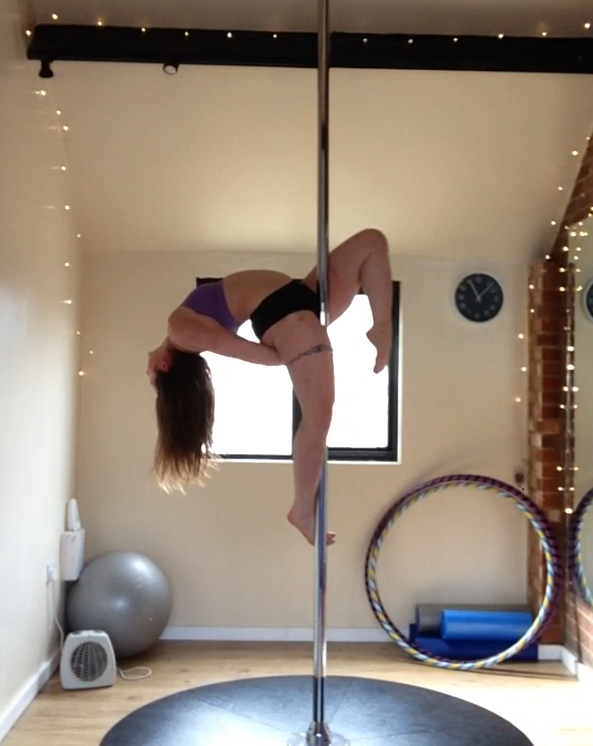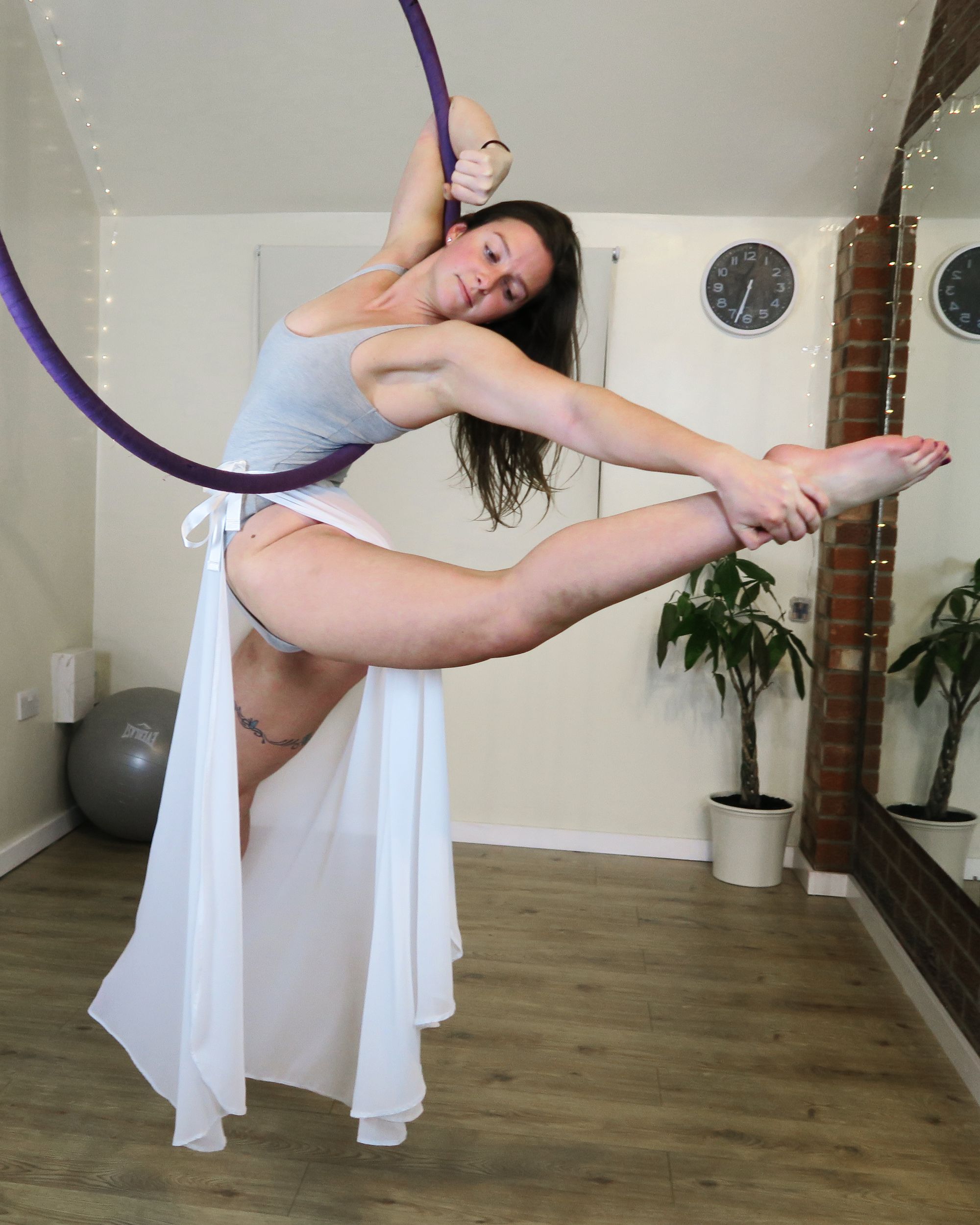Spinning routines and combinations on the hoop/silks/pole can make the most simple moves look stunning. It adds a certain flair, creates dynamic movement and means the audience or a camera can see the shapes you make from all angles! But, spinning can also equate to dizziness! When you first start doing spinning moves, it can feel like it'll never get easier, however there are some things you can do to help.
Why Do We Feel Dizzy?
The dizziness we feel during and after spinning is caused by inner ear disturbance. We have tiny strands of hair lining the walls of our inner ear canals, fluid in our inner ear flows with changes of direction and moves these hairs. Each hair is connected to a nerve cell. When the hairs move as the fluid in our inner ear flows around them, the nerve cells send a signal to our brain which gives the body a sensation of movement. When we quickly stop after a spin, the fluid continues to slosh. This means our brain is getting signals from our inner ear that we're still moving but our body and eyes are giving signals to our brain that we are not moving in the same way. This causes the world is spinning sensation.
Build Up Gradually
The main reason aerialists and dancers are able to spin and not appear to be dizzy is practise. As you do more spinning moves, your brain will learn to ignore the signals from your inner ear and rely instead on body sensors. This will enable you to cope with spinning more easily. To train your brain you need to build up the speed of the spin and the time spinning over a few weeks/months. Start with a slow spin for just one move. Then gradually add more moves to increase the length of time you're spinning, and increase the speed of your spin. Also, try spinning just a couple of times during your training session and have lots of work on static and breaks in between. Then increase until you're spending more time training spinning than static. Under The Hoop Moves are great to practise spinning as you can control your spin and can get down quickly if you need to.

Spotting
Spotting is a common technique used by dancers. Focus on one point, a window for example (not your apparatus as that's spinning with you). Keep looking at that point while your body is turning, when you can't keep your head facing that way any longer, quickly turn your head all the way around to look at the same point. As your head is turning just for a second, the fluid in your ears will stop flowing quickly so you should be able to do lots of spins without feeling dizzy. This is great if you're holding a move for a while. It's almost impossible if you're doing different moves and going from upright to upside down whilst spinning.
Allow Your Eyes To Blur
This is generally the best option for spinning while you're upside down and/or doing different moves. This is what I do, and to be honest I didn't realise I was doing it until I researched dizziness tips for my students and saw that this is a thing! By not looking at anything in particular and allowing your eyes to relax or blur, your brain isn't receiving signals from your eyes countering the signal from your inner ear.
Spin The Other Way
I know when you feel dizzy the last thing you want to do is spin. But if you do a spin going the opposite direction, it will help the fluid in your inner ear to come to a stop more quickly. If you're doing long combinations or a routine, try to include spins going both directions.
Ginger
Ginger is the oldest trick in the book for relieving dizziness. It is a natural alternative to tablets and has soothing properties which work fast when ingested. Drinking ginger tea (see my recipe here) before you train or eating Crystallised Ginger will help to prevent you feeling dizzy. I'm not sure if gingerbread men work but I think it's always worth a try!!
Do you get dizzy when you're spinning? Have you got any other tips on how to cope? xx


Comments